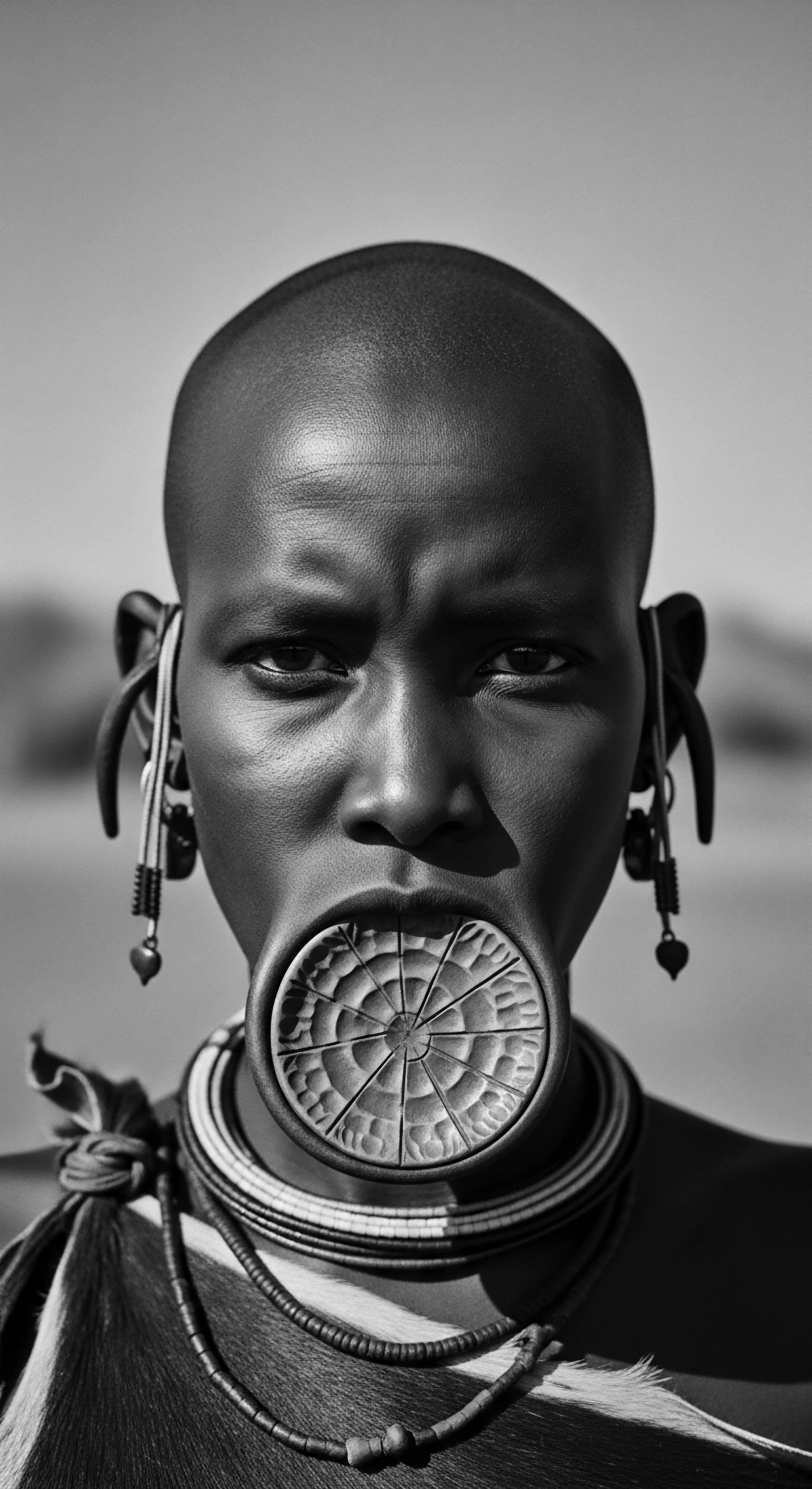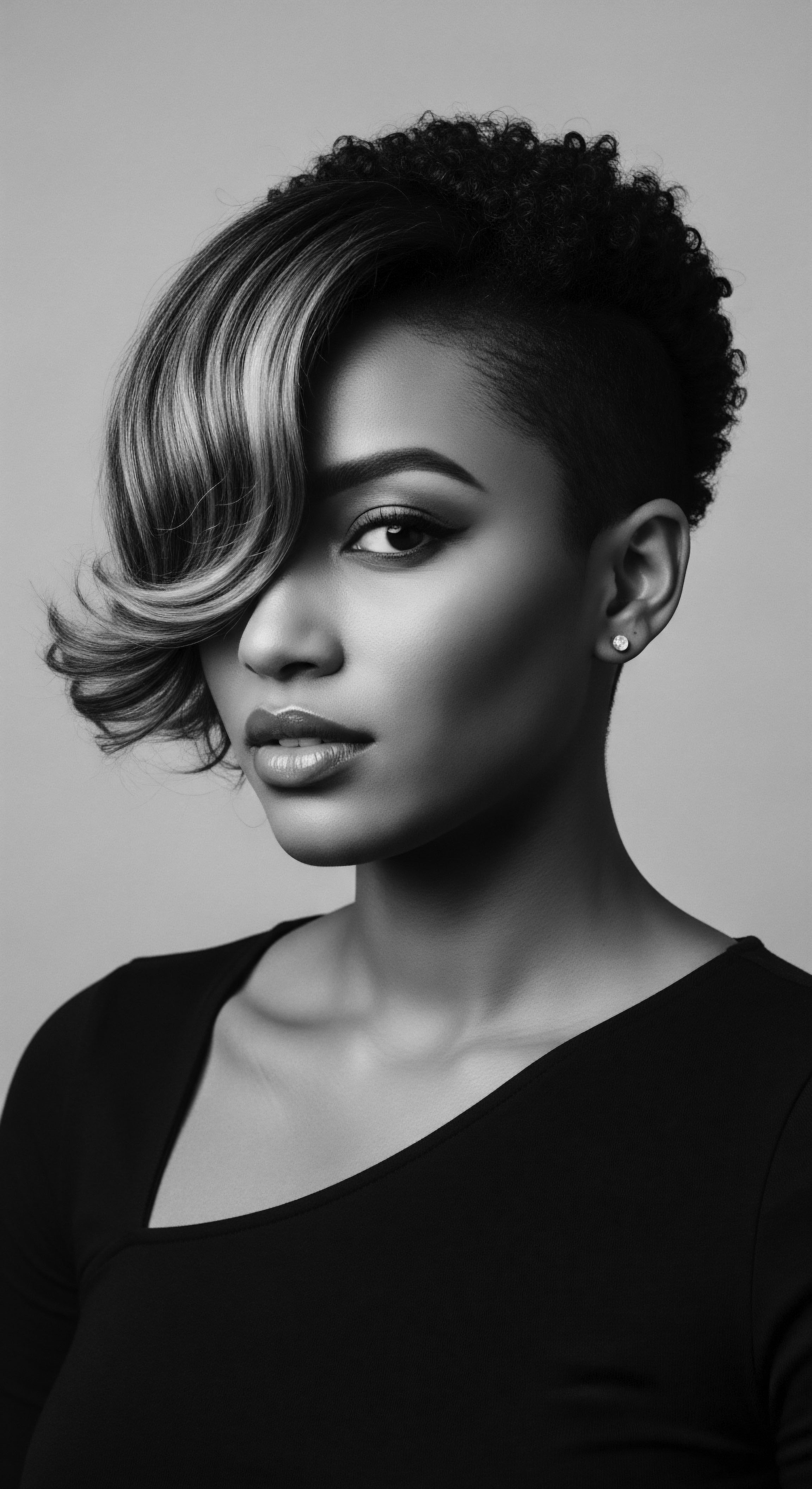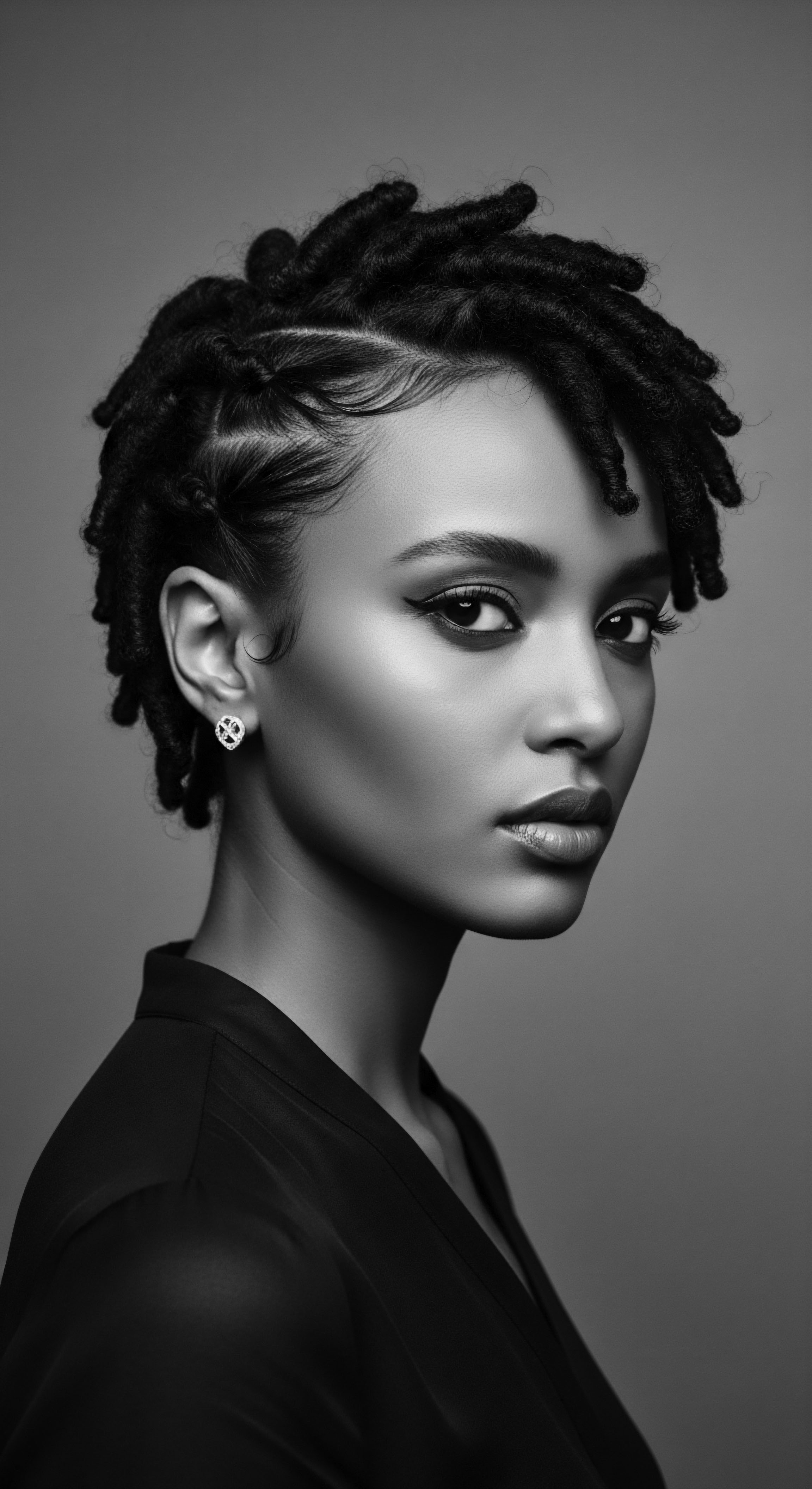
Fundamentals
The phrase “Biblical Cosmetics” offers a glimpse into the ancient world’s approach to personal adornment, health, and spiritual practice. This idea encompasses the various substances, unguents, and rituals employed by people throughout the biblical era for purposes that extended beyond simple vanity. At its most fundamental, the meaning of Biblical Cosmetics refers to the use of natural materials for enhancing physical appearance, maintaining hygiene, and participating in sacred rites. These practices were deeply interwoven with daily life, reflecting societal norms, available resources, and prevailing spiritual beliefs.
Ancient civilizations in the Near East, including those from which biblical narratives spring, held a sophisticated understanding of botanical and mineral properties. They crafted solutions for skin, hair, and scent that served both practical and symbolic functions. Early evidence from archaeological findings demonstrates that people engaged in body care and aesthetic presentation across many centuries. This was not merely about superficial beauty; it was frequently connected to concepts of wellness, status, and purity.
Consider the simplest forms ❉ oils and balms. These were paramount. Olive oil, for example, served as a foundational element, appreciated for its moisturizing properties in a sun-drenched, arid climate.
It protected skin from desiccation and offered cosmetic benefits. Such oils were not luxuries alone; they were often seen as necessities for both men and women across various societal strata.
Biblical Cosmetics, at its core, refers to ancient practices of personal care and adornment using natural materials, deeply intertwined with spiritual and communal life.
The everyday routines of washing and anointing with oils were hygienic imperatives in the warm climates of the East. Beyond cleansing, these preparations imparted a pleasant scent, a welcome addition to daily life where water could be scarce.
- Oils ❉ Vegetable oils, such as Olive Oil, Almond Oil, and Sesame Oil, formed the base for many ancient unguents, softening the skin and hair.
- Fragrant Resins ❉ Substances like Myrrh and Frankincense, often mentioned in biblical texts, provided rich aromas for perfumes and anointing oils.
- Minerals ❉ Finely ground minerals, like Kohl, were used for eye makeup, offering protection from the sun’s glare and perceived spiritual benefits.
The understanding of Biblical Cosmetics begins with recognizing these elemental components and their dual roles. They served to beautify the outward form while also holding a significant place in the spiritual and communal fabric of ancient societies. These early cosmetic applications set a precedent for later, more elaborate practices, reflecting humanity’s continuous quest for wellbeing and connection to the divine through personal care.

Intermediate
Moving beyond rudimentary understanding, the meaning of Biblical Cosmetics deepens, revealing a sophisticated interplay of utility, cultural expression, and spiritual symbolism within the ancient world. These practices, far from being simplistic, involved skilled artisanship and specific ingredient sourcing, often tied to trade routes across the Near East. The application of these preparations extended into communal gatherings, therapeutic uses, and rites of passage, reflecting a comprehensive approach to human existence.
The Bible itself offers many references to these substances, underscoring their cultural relevance. The Queen of Sheba’s gifts to Solomon, for instance, included a generous quantity of spices and precious stones, highlighting the economic weight of these aromatic commodities. Perfumes and fragrant spices could command prices surpassing even silver and gold, designating them as luxury items primarily for the wealthy and for temple use initially. However, as time progressed, their application broadened among various social strata.

The Sacred and the Secular in Ancient Adornment
Ancient cosmetics were not solely for beautification. Many preparations served as sacred anointing oils for priests, kings, and objects used in worship. For instance, Exodus 30:22-25 describes a precise recipe for the holy anointing oil, a fragrant blend of myrrh, fragrant cinnamon, fragrant cane, cassia, and olive oil. This ritualistic use underscored the sanctifying influence of these substances, setting individuals and items apart for divine service.
On a secular level, these preparations formed a crucial part of daily hygiene. People bathed and then anointed their bodies with oils and ointments to keep skin supple and shielded from the harsh environmental elements. Ancient Egyptians, for example, used castor oil and almond oil to keep their locks smooth and healthy, practices that also helped in deterring lice, an enduring concern in warm climates.
The cultural significance of Biblical Cosmetics was deeply embedded in daily life, serving roles from religious consecration to personal hygiene and social communication.
The historical narrative of Biblical Cosmetics also connects with textured hair heritage through broader ancient African practices, which often paralleled or influenced the Near East. In ancient Egypt, hairstyles were more than mere aesthetic choices; they were outward symbols of social status, age, and spiritual beliefs. Wigs, often intricately braided from human hair or plant fibers, were prevalent across all genders and classes, offering both stylistic versatility and practical protection from the sun and lice.

Hair as a Symbol of Identity and Communication
For African communities, hair transcended appearance, functioning as a potent medium for communication, holding spiritual powers, and reflecting communal identity. Each twist, braid, or adornment could convey specific messages regarding marital status, tribal affiliation, age, wealth, or social rank. The art of hair braiding, passed down through generations, constituted a visual language steeped in cultural meaning.
Consider the use of kohl, a mineral-based eye paint. While the Bible mentions kohl with a degree of disapproval in some contexts, such as Jeremiah 4:30 and Ezekiel 23:40, its widespread use across ancient Egypt and Israel for both cosmetic and medicinal purposes demonstrates a shared cultural practice. Kohl was believed to protect eyes from the sun’s glare and infections, and in some cultures, to ward off the evil eye. This practical application, coupled with its symbolic weight, speaks to a holistic understanding of beauty intertwined with well-being.
The preparation of these substances was a specialized craft. Perfumers were highly regarded, their skill recognized in sayings like the Talmudic adage, “Happy is he whose craft is that of a perfume maker.” This artisanal knowledge allowed for the creation of complex blends, often based on vegetable oils with aromatic resins and flowers. These historical practices illustrate how the human desire for adornment has always been rooted in a deeper understanding of health, cultural values, and spiritual connection.

Academic
The definition of “Biblical Cosmetics” extends beyond a mere inventory of ancient beauty preparations; it signifies a complex sociocultural construct encompassing the therapeutic, ritualistic, and expressive dimensions of personal care within the historical landscape of the biblical world. This phenomenon represents the intersection of ethnobotany, ancient medical knowledge, religious ritual, and communal identity formation, particularly when viewed through the lens of textured hair heritage. An academic explication of Biblical Cosmetics necessitates a critical examination of its historical context, material composition, and its often-unacknowledged resonance with the ancestral practices of African and diasporic communities.
Fundamentally, Biblical Cosmetics refers to the array of natural substances and their applications for personal adornment, hygiene, and spiritual purposes as referenced or implied within biblical texts and corroborated by archaeological findings from the ancient Near East. This definition broadens to include the broader regional practices, particularly those of ancient Egypt and Mesopotamia, which profoundly shaped the material culture of Israel and the surrounding territories. The meaning of this term, therefore, is not static; it dynamically reflects changing social mores, theological interpretations, and the enduring human inclination towards self-presentation and connection to the divine.

Materiality and Ancient Formulation Sciences
The material composition of Biblical Cosmetics provides a foundational understanding. Oils, particularly olive oil, served as the primary base for unguents and perfumes. This was not merely a matter of convenience; olive oil possesses inherent emollient and protective qualities, crucial in an environment characterized by intense sun and dryness. Researchers have unearthed numerous artifacts, including stone palettes, cosmetic containers, and specialized tools, indicating sophisticated methods of grinding minerals and blending botanical extracts.
Beyond simple oils, ingredients like myrrh, frankincense, cinnamon, cassia, and nard were highly prized for their aromatic and purported medicinal properties. These substances were not locally abundant; their presence speaks to extensive trade networks that linked ancient Israel to distant lands, underscoring the economic and diplomatic significance of these “cosmetic” commodities. The careful preparation of these blends, often reserved for specialized perfumers, highlights an early form of pharmaceutical and cosmetic science. For example, the precise recipe for the sacred anointing oil in Exodus 30:22-25 outlines specific quantities of aromatic spices mixed with olive oil, a detailed formulation for a ritualistic cosmetic.
The intellectual property of ancient cosmetic formulation involved botanical expertise and precise measurement, indicating a sophisticated understanding of natural compounds.

Beyond Adornment ❉ Therapeutic and Spiritual Dimensions
The role of Biblical Cosmetics transcended outward appearance. Unguents were applied for their healing properties, as seen in the parable of the Good Samaritan, where oil and wine tended to wounds. Additionally, preparations were used for embalming and burial practices, honoring the deceased and mitigating decay, a function that underscores the deep reverence for the body and the transition to the afterlife.
Perhaps the most compelling dimension of Biblical Cosmetics relates to their profound spiritual and ritualistic significance. Anointing with oil consecrated individuals for sacred service—kings, priests, and even prophets. The fragrant smoke of incense, derived from similar aromatic resins, symbolized prayers ascending to the divine. This spiritual utility of personal care substances positions Biblical Cosmetics not as mere vanity, but as a bridge between the physical and the metaphysical, a means of connecting the earthly realm with heavenly favor.

Echoes in Textured Hair Heritage ❉ A Case Study of Resilience
The scholarly exploration of Biblical Cosmetics finds a profound parallel in the ancestral practices of textured hair heritage, particularly within Black and mixed-race communities. While direct biblical texts may not explicitly detail the care of textured hair, the underlying principles of utilizing natural resources for health, spiritual connection, and identity expression are strikingly resonant. Ancient African civilizations, contemporaneous with and influential upon the biblical world, viewed hair as a potent symbol. Hair served as a means of communication, relaying information about age, marital status, tribal affiliation, social standing, and even spiritual beliefs.
One compelling historical example that powerfully illustrates the enduring ingenuity and cultural significance of hair care within ancestral Black experiences comes from the period of enslavement in the Americas. During this brutal era, enslaved Africans, stripped of their material possessions and often their names, found ways to preserve aspects of their heritage through their hair. A poignant narrative, attested to in historical accounts and oral traditions, speaks to the ingenious use of braided hairstyles as a form of resistance and communication. It is speculated that specific braiding patterns and the arrangement of hair could serve as maps or indicators of escape routes for those seeking freedom.
In a remarkable display of resourcefulness and defiance, some enslaved women would reportedly apply rice seeds into their braids while planning their escape journeys. These concealed seeds could then be planted upon reaching freedom, providing a means for sustenance and a tangible connection to the earth they hoped to cultivate in a new, free life. This act is a testament to the resilience and creativity of individuals who, despite unimaginable hardships, maintained their cultural heritage as a means of self-expression and survival.
This specific case highlights a broader pattern ❉ the adaptation of ancestral hair care practices under duress, transforming them into tools for liberation and cultural preservation. The meticulous attention to braids, initially a social and spiritual custom in West Africa, became a covert medium for coded information. This example, though not directly from biblical texts, showcases the profound meaning and instrumental value hair and its care held for communities facing adversity, mirroring the multidimensional roles of ancient cosmetics as more than simple adornments. It foregrounds hair as a living archive of resistance and ingenuity.
| Aspect of Practice Core Substances |
| Biblical/Ancient Near East Context Olive oil, myrrh, frankincense, kohl, plant-based oils, resins. |
| Textured Hair Heritage (African/Diaspora) Shea butter, castor oil, coconut oil, plant-based oils, herbs, natural pigments. |
| Aspect of Practice Functions |
| Biblical/Ancient Near East Context Hygiene, therapeutic care, spiritual anointing, aesthetic enhancement, social status markers. |
| Textured Hair Heritage (African/Diaspora) Protection, moisture retention, communal bonding, communication, spiritual connection, identity markers, resistance. |
| Aspect of Practice Hair Practices |
| Biblical/Ancient Near East Context Oiling, wig wearing, hair removal, ceremonial anointing of head. |
| Textured Hair Heritage (African/Diaspora) Braiding, twisting, oiling, threading, adornment with beads and cowrie shells, head wrapping. |
| Aspect of Practice Cultural Resonance |
| Biblical/Ancient Near East Context Symbol of wealth, purity, divine favor, status. |
| Textured Hair Heritage (African/Diaspora) Symbol of identity, heritage, pride, spirituality, social status, resilience. |
| Aspect of Practice These ancient practices, though geographically disparate, often shared fundamental principles of care, communication, and spiritual connection through personal adornment, creating an enduring legacy of hair knowledge. |
The systematic delineation of Biblical Cosmetics, therefore, must account for these interconnected incidences. The sophisticated use of oils and pigments, whether for ritual purification in the Temple or for intricate braiding in West African communities, speaks to a shared ancestral wisdom concerning the body’s care and its connection to the unseen world. Examining these links provides not simply a historical understanding, but a profound appreciation for the deep well of human ingenuity and cultural continuity in the face of varying environmental and social pressures.

Reflection on the Heritage of Biblical Cosmetics
As we draw this meditation on Biblical Cosmetics to a close, a sense of deep kinship emerges, connecting ancient practices with the living traditions of textured hair care and community today. The journey has taken us through the elemental biology of early unguents, through the tender threads of ancient care rituals, to the unbound helix of identity that hair has always symbolized. These historical echoes remind us that hair has never been a mere accessory; it remains a profound extension of self, memory, and collective spirit.
The heritage of Biblical Cosmetics, in its broad sense, invites us to consider the wisdom of our ancestors, those who understood the intricate dance between nature’s bounty and human well-being. They recognized the protective qualities of natural oils, the sensory comfort of aromatic resins, and the expressive power of adornment. This recognition transcends time, finding resonance in the continued practice of hair oiling within diasporic communities, where the touch of hands on hair is often a generational blessing, a continuation of inherited knowledge.
Our exploration has affirmed that hair, particularly textured hair, has always been a canvas for profound meaning. From the ceremonial wigs of ancient Egypt, signifying status and spiritual connection, to the cornrows of West Africa, which could communicate a person’s tribal lineage or even serve as hidden maps to freedom, hair carried stories. These narratives, often silenced or suppressed through periods of colonial subjugation, are now being reclaimed, braided back into the vibrant story of cultural pride.
The ongoing story of textured hair is a vibrant testament to ancestral knowledge, where every strand can hold a memory, a protest, or a promise.
The enduring legacy of Biblical Cosmetics, therefore, encourages a sensitive inquiry into the ways our forebears lived, cared for themselves, and expressed their deepest beliefs through seemingly simple acts of personal grooming. It is a call to honor the intelligence embedded in traditional practices, to understand that the quest for well-being is a timeless pursuit, often found in the most humble of natural offerings. This connection to the deep past provides not only context for our present understanding of hair science and care, but also a spiritual grounding, allowing each strand to whisper tales of resilience and beauty, connecting us to the ancient source of our collective human story.

References
- Arnold, Dieter. The Encyclopaedia of Ancient Egyptian Architecture. Princeton University Press, 2003.
- Bresciani, Edda. An Introduction to Ancient Egypt. University of California Press, 1999.
- Brewer, Douglas J. and Emily Teeter. Ancient Egypt ❉ Foundations of a Civilization. Pearson Prentice Hall, 2007.
- Chant, Joy. The History of the Bible. Metro Books, 2006.
- David, Rosalie. Handbook to Life in Ancient Egypt. Facts on File, 1998.
- Hankir, Zahra. Eyeliner ❉ A Cultural History. Penguin Books, 2023.
- Hill, Daniel Delis. History of World Costume and Fashion. Pearson Education, 2011.
- James, T. G. H. Pharaoh’s People ❉ Scenes from Life in Ancient Egypt. University of Chicago Press, 1986.
- Larkin, William J. Jr. The Minor Prophets ❉ An Exegetical and Expositional Commentary. Moody Publishers, 2000.
- Robins, Gay. Women in Ancient Egypt. Harvard University Press, 1993.
- Theophrastus. De Odoribus (On Odours), translated by Arthur Hort. Harvard University Press, 1916.
